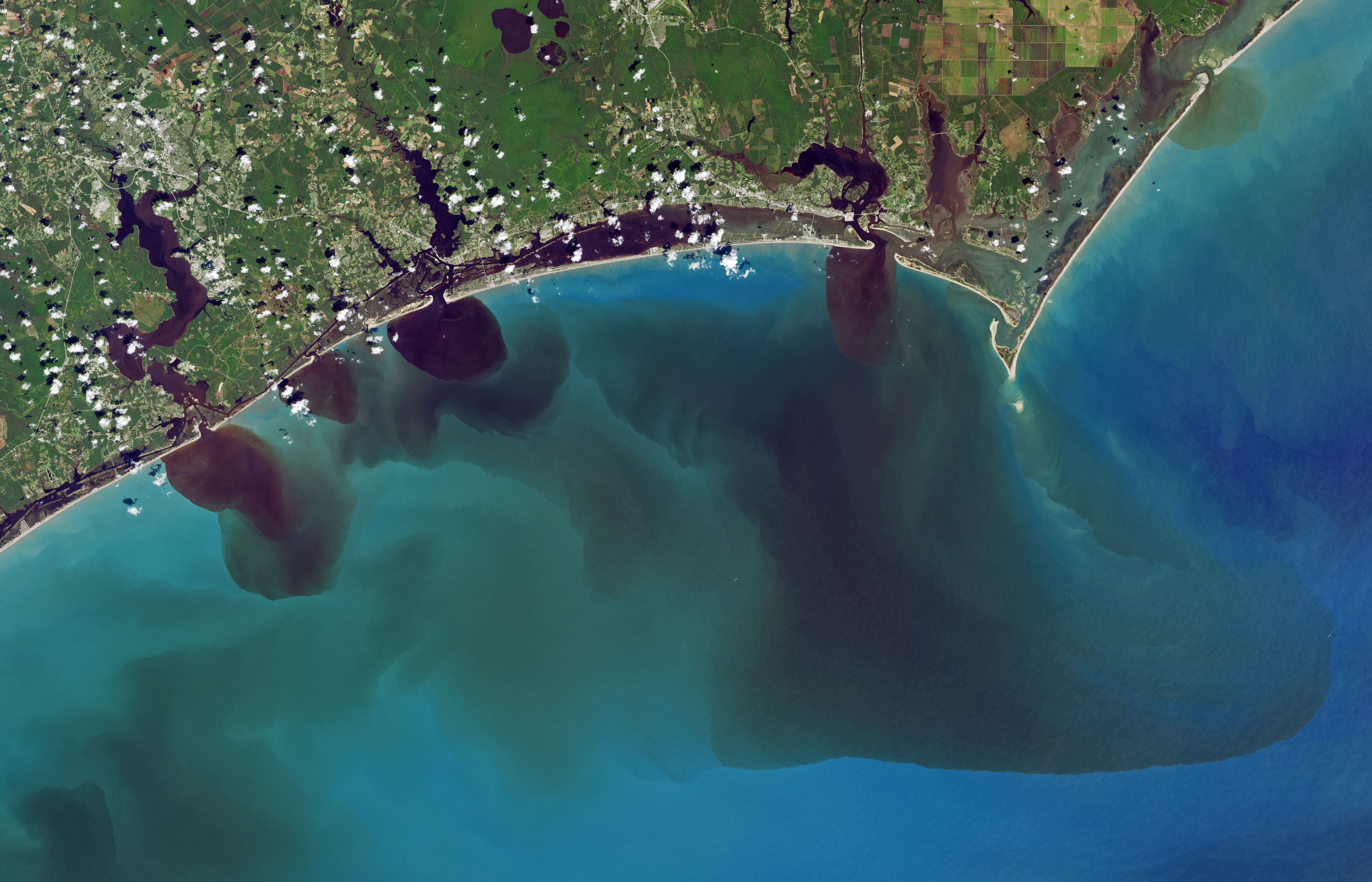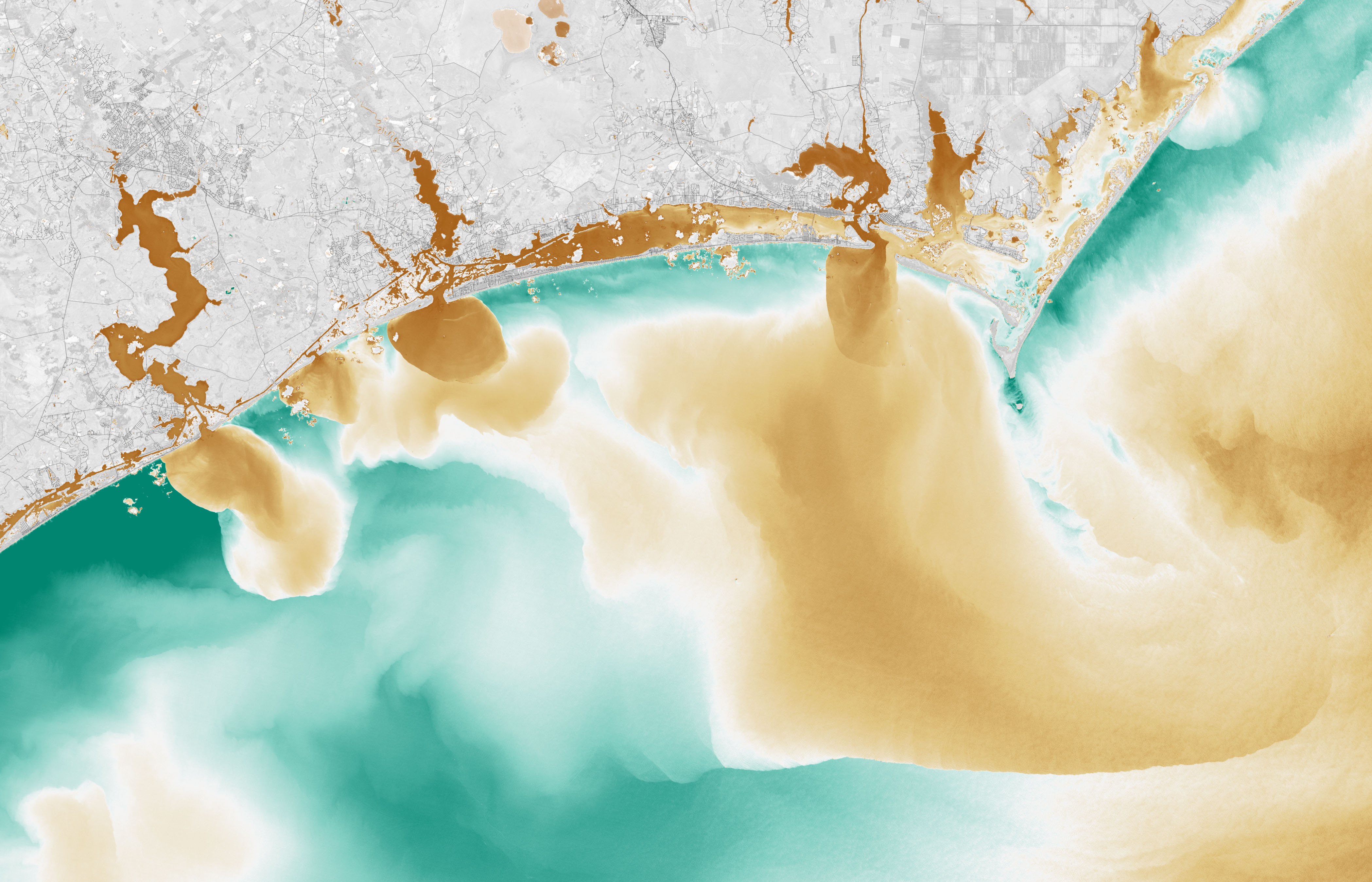
Inky Black, Polluted Rivers Seep into Ocean After Hurricane Florence in NASA Image

Over 8 trillion gallons of rain fell on North Carolina during Hurricane Florence, according to an unofficial estimate reported by the National Weather Service in Raleigh.
As the floodwaters rose, they churned up pollution and debris, which then was fed into the swollen rivers of North Carolina, a new NASA image reveals. Snapped on Sept. 19 by NASA's Operational Land Imager on the Landsat 8 satellite, this image shows how Hurricane Florence affected water quality: the White Oak River, New River and Adams Creek spew darkened water into an equally discolored Atlantic Ocean. [Hurricane Florence: Photos of a Monster Storm]
Organic matter such as leaves, roots or bark contains pigments and chemicals that can color the water different shades, based on how much is in the water. In this image, the darker brown colors represent higher concentrations of contaminants, while the blues and greens have lower concentrations of contaminants.

The second image combines visible and infrared information to better reveal how much "colored dissolved organic matter" is present in the rivers and the Atlantic, according to the statement.
One type of contaminant, pig waste, can lead to mass fish die-offs and algal blooms, Live Science previously reported. It's not clear if pig waste is part of the contamination shown in the image.
Meanwhile, most of the rivers in North Carolina remain flooded, but water levels in some have begun receding, while some are still rising, according to NASA. Many homes, buildings and roads are still submerged in standing water.
Sign up for the Live Science daily newsletter now
Get the world’s most fascinating discoveries delivered straight to your inbox.
Originally published on Live Science.

Yasemin is a staff writer at Live Science, covering health, neuroscience and biology. Her work has appeared in Scientific American, Science and the San Jose Mercury News. She has a bachelor's degree in biomedical engineering from the University of Connecticut and a graduate certificate in science communication from the University of California, Santa Cruz.









